Allergy-Free Dog Breeds for a Cleaner Home Environment
admin
July 27, 2025
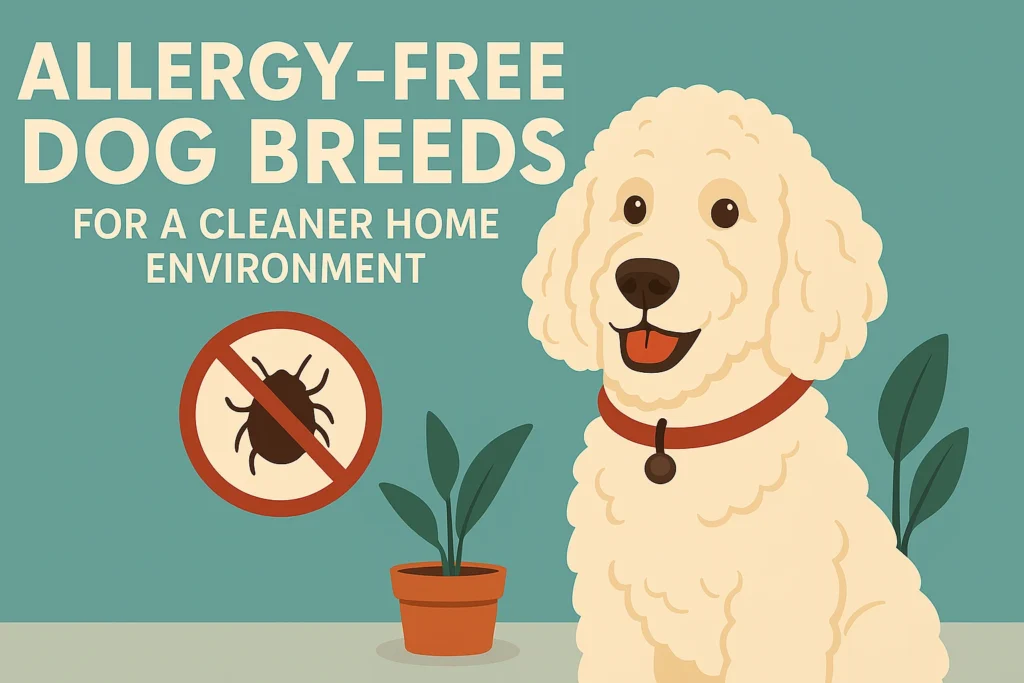
For dog lovers who sneeze, wheeze, or itch around their furry friends, the dream of pet ownership can feel out of reach. But here’s the good news: hypoallergenic dog breeds can make it possible to share your home with a canine companion without triggering allergies. These breeds, known for producing fewer allergens like dander, saliva, or urine proteins, can help create a cleaner, healthier home environment.
In this article, we’ll explore what makes a dog hypoallergenic, highlight the best breeds for allergy sufferers, and share practical tips for keeping your home allergen-free. Whether you’re in the US, UK, Canada, or beyond, this guide will help you find the perfect furry friend.
Understanding Hypoallergenic Dogs
Before diving into specific breeds, let’s clear up a common misconception: no dog is 100% hypoallergenic. All dogs produce allergens—proteins found in their dander (dead skin flakes), saliva, and urine—that can trigger reactions like sneezing, itchy eyes, or asthma. However, hypoallergenic breeds shed less fur and dander, reducing the spread of these allergens in your home. Breeds with hair-like coats (rather than fur) or minimal shedding are often the best choices for allergy sufferers. According to the American Kennel Club (AKC), these dogs have “predictable, non-shedding coats” that produce less dander, making them ideal for sensitive households.
Allergies vary from person to person, so what works for one individual might not work for another. It’s always a good idea to spend time with a dog before bringing them home to ensure they don’t trigger your symptoms. With that in mind, let’s explore some of the top hypoallergenic breeds that can help keep your home cleaner and your allergies in check.
Top Hypoallergenic Dog Breeds
1. Poodle

Poodles are the poster child for hypoallergenic dogs, and for good reason. Available in Standard, Miniature, and Toy sizes, their curly, dense coats trap dander, preventing it from spreading around your home. Poodles are highly intelligent, trainable, and adaptable, making them great for families or individuals in apartments or larger homes. Regular grooming—every 4-6 weeks—is essential to keep their curls tangle-free and dander to a minimum. Their versatility and minimal shedding make them a top choice across the US, UK, and Canada.
2. Bichon Frise
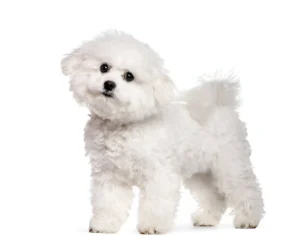
With their fluffy, white coats and cheerful personalities, Bichon Frises are small dogs with big appeal. Their tightly curled coats don’t shed much, trapping dander and keeping it from becoming airborne. These playful pups require weekly brushing and occasional professional grooming to maintain their coat’s health. Bichons are great for families with kids and adapt well to various living environments, from city flats to suburban homes. Their low-shedding nature makes them a favorite for allergy sufferers.
3. Yorkshire Terrier
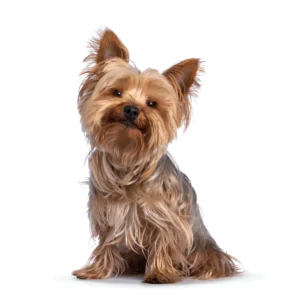
Don’t let their long, silky coats fool you—Yorkshire Terriers are surprisingly hypoallergenic. Their hair-like coat sheds minimally, reducing dander in your home. Daily brushing is necessary to prevent tangles, but their small size and low-maintenance grooming needs make them ideal for apartment dwellers. Yorkies are spunky, loyal, and full of personality, making them a great companion for allergy-prone pet owners.
4. Schnauzer
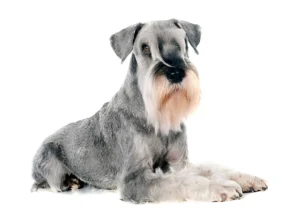
Available in Miniature, Standard, and Giant sizes, Schnauzers are known for their wiry, low-shedding coats. These breeds produce less dander, which helps keep your home cleaner. Schnauzers are intelligent, protective, and adaptable, thriving in both active households and calmer environments. Regular clipping and grooming are needed to keep their coat in top shape, but their minimal shedding makes them a solid choice for allergy sufferers.
5. Portuguese Water Dog

Made famous by the Obama family, Portuguese Water Dogs have curly, waterproof coats that shed very little. Originally bred to work with fishermen, these energetic dogs are great for active families who love outdoor adventures. Their dense coats require regular grooming, but their low-shedding nature keeps allergens at bay. They’re a fantastic option for those seeking a larger hypoallergenic breed.
6. Maltese

The Maltese is a small, elegant breed with a silky, non-shedding coat that’s perfect for allergy sufferers. Their long, white hair requires daily brushing to prevent matting, but their minimal shedding means less dander in your home. Maltese dogs are affectionate, playful, and great for families or individuals in smaller spaces. Their gentle temperament makes them a beloved choice for allergy-prone pet owners.
7. Xoloitzcuintli (Mexican Hairless)

For those who prefer a truly low-maintenance option, the Xoloitzcuintli (pronounced “show-low-eats-queen-tlee”) is a hairless breed that produces minimal dander. Available in hairless and short-coated varieties, Xolos require little grooming, though their skin needs occasional care to stay healthy. These loyal, intelligent dogs are a rare but excellent choice for allergy sufferers looking for something unique.
8. Labradoodle
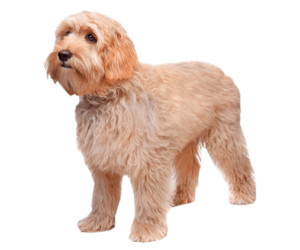
A cross between a Labrador Retriever and a Poodle, Labradoodles combine the friendly, outgoing nature of Labs with the low-shedding coat of Poodles. While not a purebred, their curly or wavy coats trap dander effectively, making them a popular choice for allergy sufferers. Regular grooming is key to maintaining their coat and minimizing allergens. Labradoodles are great for families and come in various sizes, from standard to miniature.
Tips for Managing Allergies in Your Home
Choosing a hypoallergenic breed is only half the battle. To create a cleaner, allergy-friendly home environment, follow these practical tips:
Regular Grooming: Brush your dog frequently (outside, if possible) to remove loose hair and dander. Weekly baths with a gentle, anti-allergenic shampoo can further reduce allergens. If grooming triggers your allergies, enlist a professional groomer or a non-allergic family member.
Clean Your Home: Vacuum regularly with a HEPA-filter vacuum to capture dander and allergens. Replace carpets with hardwood, tile, or vinyl flooring to minimize allergen buildup. Wash your dog’s bedding weekly in hot water to remove dander and saliva.
Use Air Purifiers: Invest in a high-quality air purifier with a HEPA filter to trap airborne allergens. Place purifiers in high-traffic areas like the living room or bedroom for maximum effect.
Create Dog-Free Zones: Keep your bedroom off-limits to your dog to reduce allergen exposure while you sleep. Use baby gates or training to enforce these boundaries.
Avoid Slobbery Breeds: Dogs that drool excessively, like Saint Bernards or Bulldogs, can spread saliva-based allergens. Stick to breeds with minimal drooling to keep your home cleaner.
Test Before Committing: Spend time with a breed before adopting to ensure it doesn’t trigger your allergies. Visit a breeder or shelter to interact with the dog in a controlled environment.
The Science Behind Allergies and Dogs
Dog allergies are caused by proteins like Can f 1, found in dander, saliva, and urine. When these proteins become airborne or stick to surfaces, they can trigger symptoms like sneezing, congestion, or itchy eyes. Hypoallergenic breeds produce fewer of these proteins or have coats that trap them, reducing their spread. However, individual reactions vary, and no breed is entirely allergen-free. Consulting an allergist for a skin-prick test can confirm your sensitivity and help you choose the right breed.
Research from the American Academy of Pediatrics suggests that the concept of a “hypoallergenic” dog is not universally supported, as allergen levels can differ even within the same breed. However, breeds with non-shedding or hairless coats consistently produce less dander, making them a safer bet for allergy sufferers.
Conclusion
Living with dog allergies doesn’t mean you have to give up on the joy of pet ownership. Hypoallergenic breeds like Poodles, Bichon Frises, Yorkshire Terriers, and Xoloitzcuintlis offer a path to a cleaner, healthier home environment. By combining the right breed with smart home management—regular grooming, HEPA filters, and dog-free zones—you can enjoy the companionship of a furry friend without the sneezes.
In the US, UK, and Canada, online platform like Dognizant are leading the way in promoting allergy-friendly pet care, offering resources and products to help you create a harmonious home for you and your dog. Take your time, research your options, and visit potential breeds to find the perfect match. With a little effort, you can welcome a loyal companion into your life and breathe easy.

